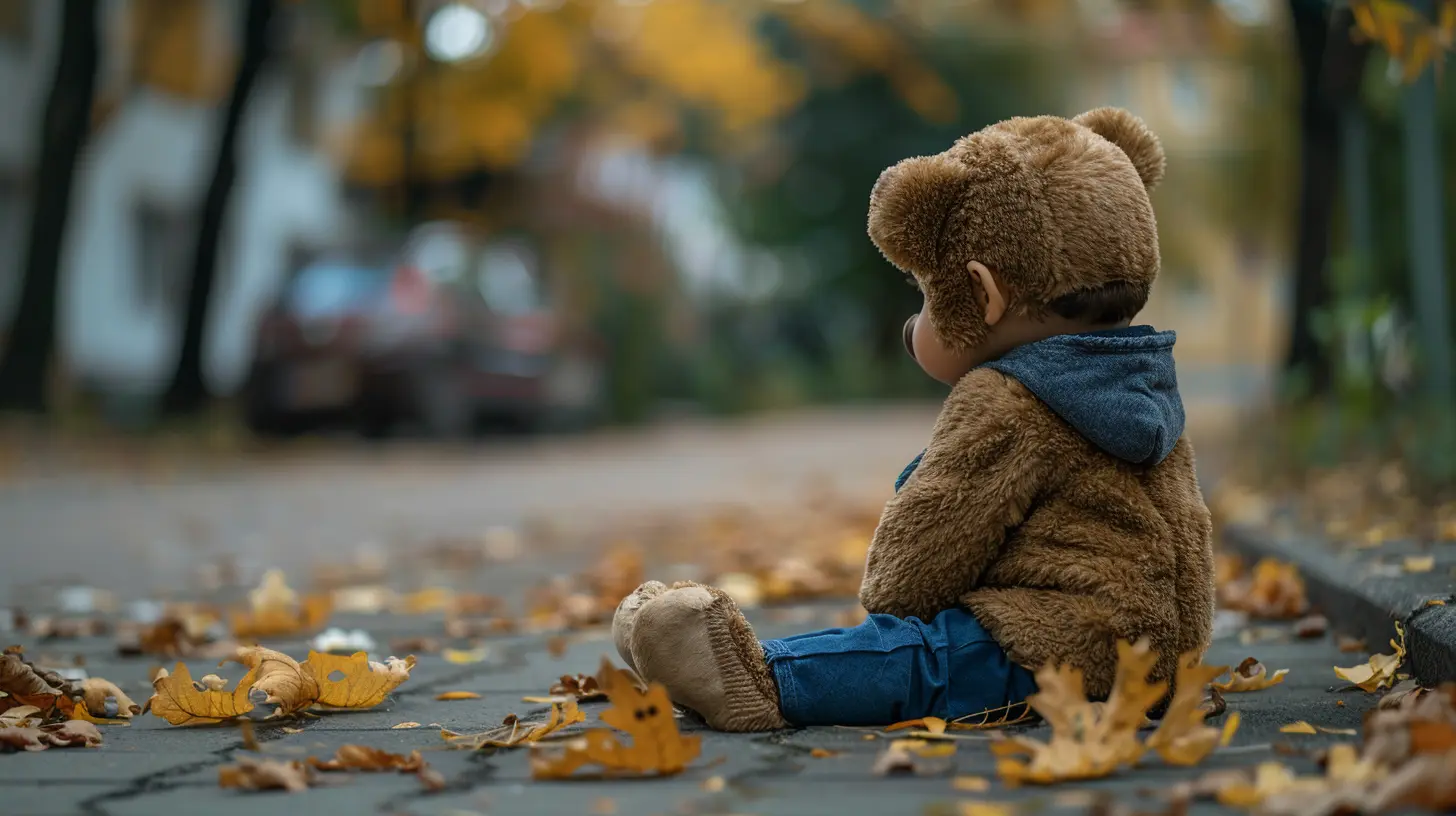Building Emotional Resilience in Kids for a Healthier Future
6 June 2025
Let’s face it—raising kids in today’s world can feel like steering a bicycle up a rocky mountain, blindfolded, during a thunderstorm. Okay, maybe that’s dramatic. But between social pressures, school stress, and everything else life throws at our little humans, it’s more important than ever to help them build emotional resilience.
So what is emotional resilience, and why should it matter to you as a parent? Let’s unpack it together.
What is Emotional Resilience Anyway?
In simple terms, emotional resilience is the ability to bounce back from challenges. It’s like a rubber band—when life pulls your child in all directions, resilience helps them snap back without breaking. Resilient kids don’t crumble when they lose a game, fail a test, or face change. Instead, they find ways to cope, grow, and keep moving.And spoiler alert: resilience isn’t something kids are born with. It’s a skill that can be taught, nurtured, and strengthened over time. That’s where you, the parent, come in.
Why Emotional Resilience is a Game-Changer
Let’s be real—life is full of ups and downs. But kids who are emotionally resilient:- Handle stress better
- Adapt to change more easily
- Build stronger relationships
- Have a healthier outlook on life
- Bounce back from failure faster
Think of resilience as emotional armor. It protects your kids from the emotional bruises life throws their way, helping them grow into confident, capable adults.
Signs Your Child Might Need Help Building Resilience
Not all kids are naturally resilient. Some signs that your child may be struggling include:- Meltdowns over small challenges
- Avoiding new tasks or experiences
- Negative self-talk (“I’m stupid,” “I can’t do anything right”)
- Getting stuck in negative emotions
- Trouble managing disappointment
If any of this sounds familiar, don’t panic. It’s never too late to start building emotional resilience.
1. Create a Safe, Supportive Environment
Before we talk strategy, let’s talk about something foundational: safety. No, not bubble-wrap-everything kind of safety, but emotional safety.Kids who feel secure, loved, and supported are more confident in facing the world.
What you can do:
- Be present. Listen without judgment.
- Create predictable routines.
- Set clear boundaries with warmth and empathy.
- Be their emotional anchor—let them know you’ve got their back, no matter what.
When kids feel emotionally safe, they’re more willing to take risks, make mistakes, and grow from them.
2. Teach Them to Name and Tame Their Feelings
Feelings can be overwhelming—especially for kids who don’t know how to express them. It’s like trying to navigate a busy highway with no traffic signs.Emotional literacy is key. Help your child identify their feelings and give them tools to process them.
Try this:
- Use feeling charts or emotion flashcards.
- Name your own feelings aloud: “I’m feeling frustrated because I had a tough day.”
- Ask reflective questions: “It seems like you’re upset—want to talk about it?”
Once kids can name their emotions, they’re halfway to managing them.
3. Normalize Failure (It’s Actually a Good Thing!)
We live in a world obsessed with achievement—but failure is a pretty fantastic teacher. Kids need to know that it’s okay to fall flat on their face sometimes.Encourage a growth mindset:
- Praise effort, not just results.
- Talk openly about your own mistakes and what you learned.
- Use phrases like “What can we learn from this?” instead of “Why did this happen?”
Failure isn’t the opposite of success—it’s part of the journey.
4. Let Them Solve Problems
As parents, our instinct is to swoop in and fix things. But when we rescue our kids every time they struggle, we rob them of the chance to build resilience.Instead, try coaching them through challenges:
- Ask questions like, “What do you think you can do about this?”
- Let natural consequences happen (within reason, of course).
- Resist the urge to step in unless it’s absolutely necessary.
Problem-solving is a muscle—give your kids the chance to flex it.
5. Model Resilience in Your Own Life
Kids are like little sponges. They soak up everything—including how you handle stress and setbacks.Be a resilience role model:
- Show how you manage your emotions.
- Talk through your problem-solving process out loud.
- Let them see you make mistakes and recover from them.
When your kids see you navigating life’s bumps with grace and grit, they'll learn to do the same.
6. Encourage Independence (Little by Little)
Building resilience involves confidence—and confidence comes from doing hard things on your own.Start small:
- Let your child order their own food at a restaurant.
- Give them age-appropriate household responsibilities.
- Encourage them to speak up for themselves in social situations.
Every small win boosts their sense of competence.
7. Promote a Strong Support Network
It takes a village, right? Resilient kids often have strong relationships outside their immediate family—like friends, teachers, coaches, or even neighbors.Help your child:
- Build friendships by inviting peers over or signing up for group activities.
- Form connections with trusted adults who can offer guidance.
- Practice healthy communication to strengthen relationships.
Knowing they’re not alone gives kids the courage to face tough times.
8. Practice Mindfulness and Coping Strategies
Teaching your kids healthy coping tools is like giving them a toolbox for life. When emotions run high, they need tools to calm down, regroup, and press on.Simple strategies:
- Deep breathing exercises (“smell the flower, blow out the candle”)
- Journaling or drawing emotions
- Taking a walk or spending time in nature
- Listening to calming music
- Practicing gratitude daily
The goal here isn’t to avoid difficult feelings, but to face them with strength.
9. Limit Screen Time and Boost Real-World Interactions
Here’s the deal—too much screen time can zap emotional resilience. It can limit real-world problem-solving and dampen face-to-face communication.Action steps:
- Set screen-free zones (like during dinner or bedtime).
- Encourage creative play, outdoor activities, or board games.
- Promote in-person interactions with peers.
Balance is the keyword. Screens aren’t evil, but they shouldn't replace meaningful, real-world experiences.
10. Celebrate Progress (Not Perfection)
Building emotional resilience is a journey, not a single achievement. Celebrate your kid’s small wins, whether it’s dealing with a tough day at school without falling apart or trying something new even though they were scared.The more you acknowledge progress, the more motivated your child will be to keep pushing forward.
The Long-Term Payoff: Healthier, Happier Adults
Raising emotionally resilient kids doesn’t just make childhood smoother—it sets the stage for a life of confidence, empathy, and emotional intelligence.Seriously, imagine your child 10, 20 years from now. Emotionally resilient adults are better at relationships, more adaptable to change, and less likely to battle overwhelming anxiety or depression.
So while it might take effort now, you’re giving your child a massive advantage in life by investing in their emotional resilience.
Final Thoughts
There’s no magic formula, no quick fix—but with patience, consistency, and love, emotional resilience can be nurtured at home every single day. It’s about creating a solid foundation, planting seeds of courage and strength, and cheering them on as they grow into strong, capable people.Remember, you’re their safety net, their guide, and their biggest fan.
So next time your child stumbles, resist the urge to fix everything. Instead, sit next to them, offer a hug, and say, “You’ve got this.” Because you know what? They really do.
all images in this post were generated using AI tools
Category:
Emotional DevelopmentAuthor:

Maya Underwood
Discussion
rate this article
2 comments
Fiona McPherson
This article is a timely reminder of the importance of nurturing emotional resilience in our children. It’s essential for their growth and well-being in an uncertain world.
June 14, 2025 at 2:42 AM

Maya Underwood
Thank you! I'm glad you found the article timely and important—nurturing emotional resilience is indeed vital for our children's well-being.
Scout Pratt
Building emotional resilience in children equips them with coping strategies, enhances their emotional intelligence, and fosters healthier relationships, paving the way for a brighter future.
June 7, 2025 at 3:16 PM

Maya Underwood
Thank you for your insightful comment! I completely agree—emotional resilience is crucial for children's development and sets the foundation for their future well-being.


